Submitted by: Alan C Beverly Fall 2013
spiralaloe@yahoo.com
www.ecotree.net
I’ve long been aware of the narrow range of environmental conditions A.p. . accepts. Few plant species have evolved with such a narrow altitudinal range (7500 ft to 8700 ft ), live only on sites facing the equator, and must be bathed in a compost tea flowing from the grassland above. A.p. is the most hardy species in the genus. Most species of cactus and succulents are more tolerant of a wider range of temperatures, soil moisture, and exposure. Many plant lovers have lost their prized specimens because of such misunderstanding. Recognition of these basics will lead you to a solution in plant management which will give you great joy and success cultivating A.p. .

First, some plant physiology. Each leaf of A.p. is a water balloon inflated by hard-working roots which inflate each leaf firmly, driving new growth. The root cells require much oxygen to do this, thus the need for a soil which has great macropores that facilitate drainage and the diffusion of oxygen into the soil. Think of A.p. like one of the lighted blow-up snowmen we see on lawns at X-mas. When the power is cut the snowmen collapse. When A.p. roots suffocate or overheat the plant collapses and the rosette closes.
Lack of moisture for a long time will produce such a collapse also. Root cells only function well up to about 75 F. With higher temperatures the cellular engine “races to redline” and more oxygen cannot diffuse fast enough to serve the cells’ needs. Respiratory enzymes may also be disabled by temps above 80 F. I have clipped a healthy bright yellow root and placed it in 80F water and watched it turn necrotic brown in 2 minutes.

Small plants (up to 45 leaves) are more susceptible to the higher temperatures encountered in many nursery environments. Larger plants become progressively more tolerant of higher temperatures. Cactus and succulents from the North American Southwest have evolved great tolerance to heat and soil moisture deficits. Their unified body has less surface area for photosynthesis, but works perfectly to conserve moisture in high heat and does not depend on continuous root pumping to maintain the plant.
Southern Calif. and interior valleys with summer temps reaching 100 F challenge owners of A.p. to maintain their plants. The effects of high temperatures can be mitigated in a number of ways; a large thick walled (3/4”) round glazed ceramic container (top photo) is best at insulating the soil and scattering the sun's rays. A faux fiberglass half barrel is good. Overpotting is very good to promote growth and guard your plant from high temps. You can also place some shade cloth over the entire container for the summer. Wood containers also insulate well. Addition of water crystals adds heat capacity to the soil and buffers high temperatures. Landscape A.p. have an easier life in hot summer areas but may not have adequate soil to support the root function. A raised bed with lava rock, organic matter, and no other plants to compete with will produce pleasing growth.
Our most common response to heat is to water plants, and this works well for container A.p. if the soil mix is adjusted for the extra water by addition of more lava rock and raising the bottom edge of the container off the ground. Never place pebbles or pot shards in the bottom of a container hoping to improve drainage. This is worthless, creating a perched water table inside the pot. Water quality is important. Alpine plants have little tolerance for salty or alkaline water. I have installed carbon filters in my nursery to remove the chlorine , which is there to protect us, but which oxidizes micro-organisms that are important to all landscape and container plants.
(Picture, left) This plant has been in this black plastic nursery container for too long. The rate of new leaf production is less than the rate of old leaf retirement. It is losing leaf count because of the restricted soil volume, moisture deficit, and heat. It will never grow into an adult plant (~150 leaf) in this container.
A.p. performs best when offered a large volume of soil to explore. An adult plant can be achieved using a half-barrel or bigger!
Healthy juvenile plants should be increasing leaf count, and the rate of leaves retired will be very low. Mature adult plants will have a leaf turnover ratio close to 1, where new leaf production and old leaf retirement are equal. A.p. is very bio-conservative, holding onto its mass, and is very adept at moving “goo” from older leaves to produce new leaves.
When leaf tip necrosis becomes visually pronounced, extending from the lowermost (oldest) leaves to mid-spiral, then I would suggest lifting the plant and cleaning the undercrown area by pulling off all paper thin leaves and jet washing. Clip the roots back to ~6” long and replant by setting it on a mound and then manipulating the short roots under soil cover. The lowermost leaf should be above the lip of the container. Adult (~150 leaf) plants readily root out without hormones in 30 days if the soil is moist. The plant will appreciate some shade during this time. New growth appears only after new roots establish, and this comes at the cost of some oldest leaves.
Never remove leaves with tip necrosis before the plant resorbs the “goo." Test for new roots by gently rocking the plant. I’ve found it necessary to clean and re-root adult plants about every 5 years.
Leaf tip necrosis is also caused by infection with Fusarium oxysporum, the primitive fungal nemesis of A.p. . Inoculation of the soil with Actinovate (Streptomyces lydicus bacteria) protects A.p. from infection. Other products with beneficial bacteria are Essential and Companion, with Bacillus subtilis.
Infection of roots by Fusarium will not cause death, but if the area of infection is undercrown, then there is no hope. In winter, with low-angle sun and fewer hours of daylight there may be enough rain to favor foliar infection by Fusarium. Purple lesions will only mar the plants appearance and are not life-threatening. Exposure to direct sun will prevent infection.
Light quality and quantity are very important to plant form and health. A.p. is no different from any other species in this regard. The geometry of 5 spirals of sequential leaf is striking and is maintained by full sun exposure in its natural habitat. At 7500 ft there is great UV and this maintains good plant form, with the inner leaf held almost vertical. In poor light without UV A.p. experiences a crisis. Leaf length and width increase and the rosette opens as the plant attempts to expose itself to more light. The problem is more serious than you would think. A shaded plant with stretched out leaves and open rosettes will not simply revert to proper form when exposure is corrected. The poor form will persist until all leaves have been aged in sequence and retired. This can require 2 years and the lowermost leaves will be sunburned and disfigured during that time.
If you pay close attention to your plant it will give you all the answers you seek. I use this approach to all plant species . My experience with A.p. has taught me more horticulture than I ever imagined possible. We have a fascinating wealth of plants on our planet; let's enjoy our time here.
-----------------
Visiting the Spiral Aloe Plants at Succulent Gardens
This crop is about 10 years old and is blooming for the first time. Other than in habitats, I do not think there is anywhere in the world where there are this many Aloe polyphylla in bloom. Aloe polyphylla is on the endangered species list. I feel quite fortunate and unique to have tasted the very sweet nectar of Aloe polyphylla.Here are some pictures from the summer, when they were all in bloom!




In the fall, we created a new bed with 120 plants in it. We believe that this is the largest planting of spiral aloe in the world!


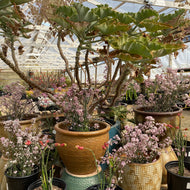

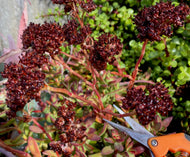
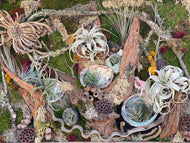
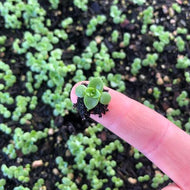
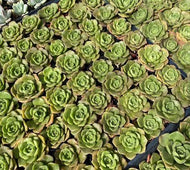
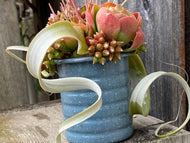
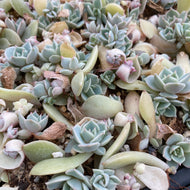
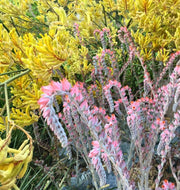
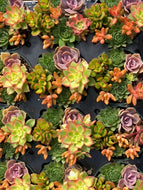
3 comments
Cost of small spiral aloe or just a cutting.
Hi there,
nice toppic. I have a question.
At the moment i have around 12 seedlings with 1 and starting to make 2nd leave. But AP is a special succulent and at this stage they stand in cactus mix ground and kept wet from the bottom at 16°C. So are these conditions ok or is something else better to do.
with friendly regards from Belgium
I what an amazing collection! I started growing AP from seeds and several germinated. After a month I decided to get a grow blue led light. I am in the London ( UK ) area and I am trying to grow a few just for my own enjoyment. After two days using the light indoors some of my plants have gone from a lovely green to a muddy colour. I fear they might die. What am I not doing correctly? Please help!